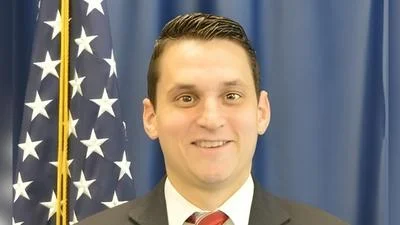The Congressional Record is a unique source of public documentation. It started in 1873, documenting nearly all the major and minor policies being discussed and debated.
“SUPPORT THE COMPREHENSIVE TEST BAN TREATY” mentioning the U.S. Dept. of Energy was published in the Senate section on pages S12192-S12193 on Nov. 8, 1997.
The publication is reproduced in full below:
SUPPORT THE COMPREHENSIVE TEST BAN TREATY
Mrs. MURRAY. Mr. President, I rise to join a number of my colleagues in speaking briefly about one of the most important issues that will come before the Senate next year in the second session of the 105th Congress.
In late September, President Clinton submitted the Comprehensive Test Ban Treaty to the Senate for ratification. The President's transmission statement includes the following:
The Conclusion of the Comprehensive Nuclear Test-Ban Treaty is a signal event in the history of arms control. The subject of the treaty is one that has been under consideration by the international community for nearly 40 years, and the significance of the conclusion of negotiations and the signature to date of more than 140 states cannot be overestimated. The Treaty creates an absolute prohibition against the conduct of nuclear weapon test explosions or any other nuclear explosion anywhere. . .
. The Comprehensive Nuclear Test-Ban Treaty is of singular significance to the continuing efforts to stem nuclear proliferation and strengthen regional and global stability. Its conclusion marks the achievement of the highest priority item on the international arms control and nonproliferation agenda.
I commend the President for his leadership on this issue. I look forward to working closely and in a bipartisan fashion to secure prompt ratification of the CTBT. I will do absolutely everything I can to support the passage of the Comprehensive Test Ban Treaty. I expect a spirited debate on the CTBT including vigorous opposition from some who continue to believe in nuclear expansion and experimentation.
Several Senate hearings have recently been held and I urge the body to move forward in a timely and deliberative manner early in 1998. As a member of the Appropriations Energy and Water subcommittee with funding responsibility for nuclear weapons activities including stockpile stewardship, I look forward to actively participating in Senate consideration of the Comprehensive Test Ban Treaty.
Mr. President, at this point, I ask that a brief titled, ``Ten Reasons for a Comprehensive Test Ban Treaty,'' be printed in the Record. This information was prepared by a nongovernmental organization in support of CTBT ratification.
The material follows:
Ten Reasons for a Comprehensive Test Ban Treaty.
1. the ctbt would guard against the renewal of the nuclear arms race
The Comprehensive Test Ban Treaty would limit the ability of nuclear weapons states to build new nuclear weapons by prohibiting ``any nuclear weapon test explosions and all other nuclear explosions.'' The ban on nuclear explosions would severely impede the development of new, sophisticated nuclear weapons by the existing nuclear powers. While countries could build advanced, new types of nuclear weapons designs without nuclear explosive testing, they will lack the high confidence that the weapons will work as designed. Thus, the Treaty can impede a nuclear arms buildup by five declared and three undeclared nuclear weapon states.
2. The CTBT would curb nuclear weapons proliferation
Under the Comprehensive Test Ban Treaty, ``threshold'' states would be prevented from carrying out the types of tests required to field a modern nuclear arsenal. While a country could develop nuclear weapons for the first time without conducting nuclear explosions, the bomb design would be fare from optimal in size and weight and its nuclear explosive power would remain uncertain. The CTBT is therefore vital to preventing the spread of nuclear weapons to additional states, where these weapons could destabilize international security.
3. The CTBT would strengthen the Nuclear Non-Proliferation Treaty
The conclusion of the CTBT is a key element in the global bargain that led to the signing and the extension of the Nuclear Non-Proliferation Treaty. in May 1995, non-nuclear states agreed to extend that Treaty in May 1995 with the understanding that Article VI measures in the original treaty--like the CTBT--would be implemented. At the May 1995 NPT extension conference, all nations agreed to ``The completion by the Conference on Disarmament of the negotiations on a universal and internationally and effectively verifiable Comprehensive Nuclear-Test-Ban Treaty no later than 1996.'' Ratification of the CTBT would further legitimize U.S. non-proliferation efforts and lay the basis for universal enforcement of the CTBT, even against the few nations that may not sign.
4. Nuclear testing is not necessary to maintain the safety and reliability of the U.S. arsenal
The U.S. has a solid and proven warhead surveillance and maintenance program to preserve the safety and reliability of the U.S. nuclear deterrent without nuclear test explosions and this program is being augmented through the Science-Based Stockpile Stewardship Program (SBSS). Although some of the projects that are part of the SBSS program are not essential to the maintenance of the stockpile, many objective experts--both critics and supporters of the program--agree that the program can ensure the safety and reliability of the U.S. nuclear stockpile without resorting to nuclear explosive testing.
All operational U.S. nuclear weapons are already ``one-point safe'' against accidental detonation of the warhead's high explosives, making even low-yield nuclear explosions, known as ``hydronuclear'' tests unnecessary. in addition, the nuclear warhead designs of operational U.s. nuclear weapons incorporate additional modern safety features. Since instituting a new annual warhead safety and reliability certification process in 1995, U.S. nuclear weapons have been twice certified without nuclear test explosions.
5. The CTBT is effectively verifiable
The CTBT would put into place an extensive, global array of 170 seismic monitoring stations, 80 radionuclide monitoring stations, 11 hydroacoustic monitoring stations, and 60 infrasound monitoring stations to detect and deter possible nuclear test explosions. Monitoring capabilities would be especially sensitive at and around the established nuclear test sites. With this monitoring system, the CTBT would--with high confidence--be able to detect nuclear test explosions that are militarily significant. In addition, the CTBT would provide an additional deterrent against potential test ban violations by establishing on-site inspection
(OSI) rights that could allow detection of the radioactive gases leaking from an underground nuclear test.
6. the ctbt would substantially enhance current u.s. monitoring capabilities
Whether or not the CTBT is ratified, U.S. intelligence agencies will be tasked with monitoring nuclear weapons programs of the nuclear powers and the efforts of non-nuclear states and groups to attain nuclear weapons. The Treaty will make that task easier by establishing a far-reaching international monitoring system across the globe that would augment existing national intelligence tools. Clearly, U.S. intelligence capabilities to detect nuclear tests and nuclear weapons development programs would be far better with the CTBT
7. the ctbt would enhance the international norm against nuclear testing
If the five declared nuclear weapon states ratify the Comprehensive Test Ban Treaty, it will strengthen the global norm against testing and weapons development that helps make the nuclear ``have-not'' nations far less inclined to develop nuclear weapons. The U.S. has not tested a nuclear weapon since 1992 when Congress passed and President Bush signed the Hatfield-Exon-Mitchell legislation establishing a moratorium on nuclear testing. This law, which remains in effect, says that the U.S. may not conduct a nuclear test explosion unless another nation conducts a test. CTBT ratification would help bring other nations in line with U.S. policy.
8. the ctbt is supported by a large majority of the american people
The Comprehensive Test Ban Treaty is supported by a large majority of the American people. U.S. public support for a nuclear weapons test ban has remained consistently high since the early days of the Cold War. The most recent poll, conducted in September 1997 by the Mellman Group, revealed that 70 percent of Americans support United States ratification of a nuclear test an treaty.
9. the ctbt is the longest-sought initiative to help reduce nuclear weapons dangers
The Comprehensive Test Ban Treaty marks an historic achievement pursued by Presidents since Dwight D. Eisenhower. For forty years, Presidents and activists have worked for an end to nuclear testing. Previous negotiations have been hindered by international incidents, the failure to compromise at key times, and most importantly, the political dynamics of the Cold War nuclear arms race itself. Ratification of the CTBT would mark an important milestone in the effort to end the nuclear arms race.
10. The ctbt would protect human health and the environment
Since 1945, six nations have conducted 2,046 nuclear test explosions--an average of one test every nine days. These tests spread dangerous levels of radioactive fallout downwind and into the global atmosphere. A 1997 National Cancer Institute Study estimates that fallout from only 90 U.S. nuclear test will likely cause 10,000--75,000 additional thyroid cancers in the U.S. Underground testing also poses environmental hazards: each blast spreads highly radioactive material underground; many underground nuclear explosions have vented radioactive gases. The Energy Department reports that 114 of the 723 U.S. nuclear tests since 1963 released radioactive material into the atmosphere.
____________________








